

How to Successfully Grow Tropical Fruits in Temperate Regions: A Comprehensive Guide for 2024
Introduction
In a world where the exotic fruits of the tropics seem light-years away, many temperate gardeners are embracing the challenge of growing their own tropical delights. Picture biting into a juicy mango or savoring the sweetness of a homegrown pineapple—all in your backyard! But can these heat-loving plants survive in less-than-tropical climates? Fear not! With the right techniques and some clever gardening hacks, you can cultivate a lush tropical paradise even in the heart of temperate zones.
Growing tropical fruits in cooler climates is not just a pipe dream; it’s a growing trend. More gardeners are realizing that with a little creativity, they can enjoy the vibrant flavors and health benefits of tropical fruits right from their own gardens. The secret lies in understanding the unique needs of these plants and how to adapt your gardening practices accordingly.
The excitement of cultivating tropical fruits can be contagious. Imagine walking through your garden, greeted by the sweet aroma of ripe guavas, the cheerful sight of colorful papayas, or the lush greenery of banana plants. It’s a feast for the senses! Plus, there’s something incredibly satisfying about growing your own food, especially when it’s something as exotic as a tropical fruit. And to give your plants the nutrient boost they need, consider using organic fertilizer that provides essential nutrients for your plants.
So, how do you pull this off? Let’s explore the essential steps and techniques to successfully grow tropical fruits in temperate regions. With a sprinkle of determination, a dash of patience, and a whole lot of curiosity, you can transform your garden into a tropical haven. So grab your gardening gloves and let’s get started on this fruity adventure!
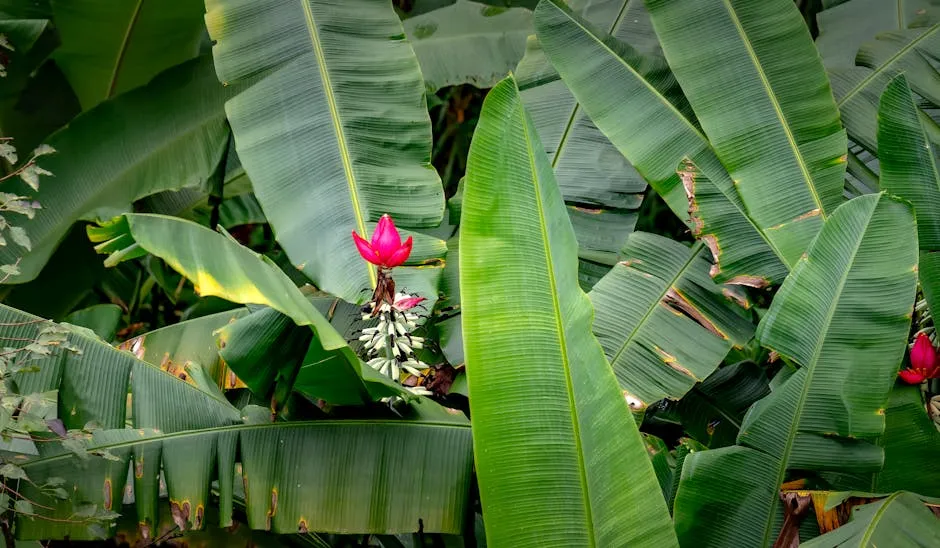
Summary of Key Points
This article will guide you through the fascinating journey of growing tropical fruits in temperate regions. We’ll explore the best practices for selecting the right varieties that can thrive in cooler temperatures, from bananas to citrus fruits. You’ll learn how to create microclimates that boost warmth and humidity, ensuring your plants receive the optimal conditions for growth. We’ll discuss the importance of soil preparation, watering techniques, and effective pest management. Plus, you’ll discover tips for protecting your plants from cold weather and how to care for them throughout the seasons. And just when you think you can’t grow tropical fruits, we’ll share creative ways to enjoy your harvest. Ready to unleash your inner tropical gardener? Let’s get started!
Understanding Tropical Fruits and Their Needs
What Are Tropical Fruits?
Tropical fruits are the sweet treasures of warm climates. Imagine biting into juicy mangoes, fresh pineapples, and delightful bananas. These fruits thrive in lush environments, soaking up the sun and humidity. Not just tasty, they’re nutritional powerhouses! Mangoes are rich in vitamins A and C, while bananas are filled with potassium. Pineapples? They’re loaded with bromelain, an enzyme that aids digestion. The unique flavors of these fruits are unlike anything else. You can’t help but smile when enjoying a ripe, sun-kissed mango. The sweetness dances on your taste buds, transporting you to a tropical paradise!
Why Grow Tropical Fruits in Temperate Climates?
Growing tropical fruits in temperate regions is like throwing a flavor party! Who wouldn’t want to enjoy the exotic tastes of mangoes and pineapples right from their backyard? This endeavor not only adds diversity to your gardening experience but also offers a delightful challenge. It’s an adventure! Plus, the economic benefits can be quite appealing. Imagine selling your homegrown tropical fruits at local farmers’ markets. You could pocket some extra cash while impressing your friends with your gardening prowess. In essence, growing tropical fruits means enriching your life with unique flavors and possibly boosting your income. So, why not give it a shot? And if you need help with your garden layout, a raised garden bed kit can be a game-changer!
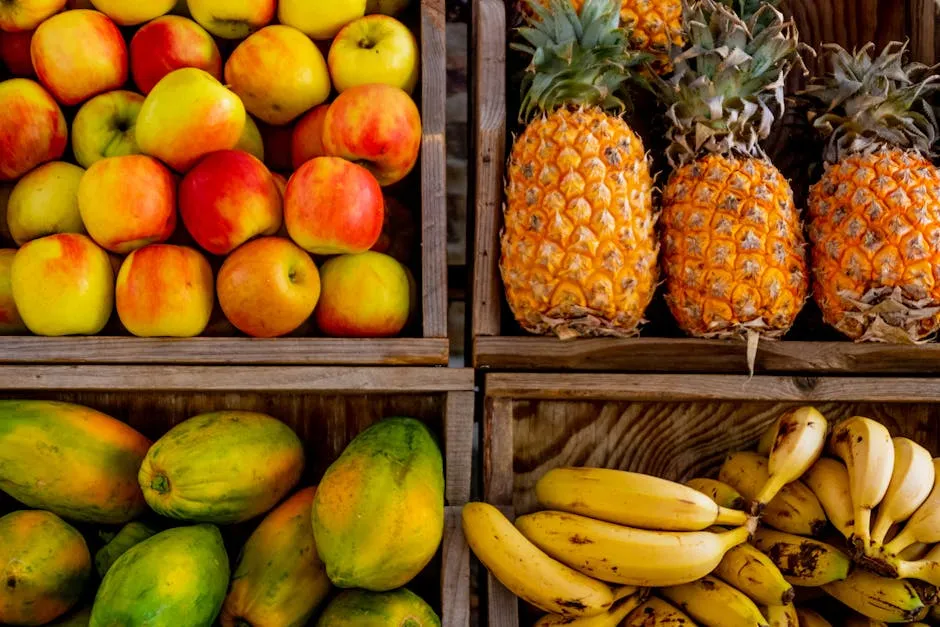
Choosing the Right Tropical Fruits for Temperate Regions
Popular Tropical Fruits to Consider
When selecting tropical fruits for temperate climates, it’s essential to choose varieties that can withstand cooler temperatures.
Bananas are a classic choice! Look for cold-hardy varieties like the Japanese fiber banana. These can tolerate frost and still produce delicious fruits. Remember to plant them in a sunny spot with well-draining soil. Water them deeply, but let them dry out between waterings to avoid root rot. And don’t forget your gardening gloves to keep your hands protected!
Citrus fruits like Meyer lemons and limes are also fantastic options. They thrive in cooler conditions and pack a zesty punch for your culinary creations. Meyer lemons are especially cold-hardy and can be grown in pots, making them versatile for your garden.
Figs and pomegranates deserve a mention too! They are surprisingly suitable for temperate regions. Figs, particularly varieties like ‘Hardy Chicago,’ can tolerate lower temperatures, while pomegranates flourish in well-drained soil and need full sun. These fruits can bring a burst of Mediterranean flavor to your garden.
By choosing the right tropical fruits, you’ll not only enjoy a bounty of unique flavors but also witness the transformation of your temperate garden into an exotic haven. Happy planting! And speaking of planting, don’t forget to test your soil conditions with a soil pH test kit!
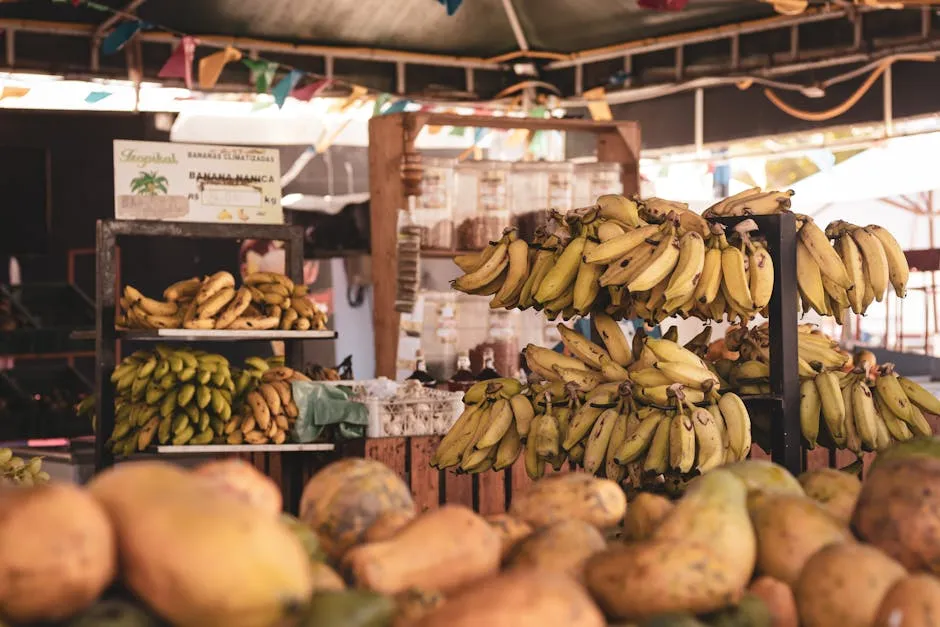
Criteria for Selection
When choosing tropical fruits for temperate regions, several key factors come into play.
Cold Hardiness is paramount. Selecting varieties that can withstand lower temperatures ensures your plants survive the chill. Cold-hardy fruits, like certain bananas and Meyer lemons, thrive even when the thermometer dips. This resilience is essential for success in cooler climates.
Adaptability is another crucial factor. Every fruit has its preferences, from soil type to sunlight. Some tropical plants favor well-draining sandy soils, while others appreciate rich, loamy mixes. Ensure the varieties you choose can thrive in your local conditions, including moisture levels and light exposure.
Disease Resistance holds significant importance too. Pests and diseases can wreak havoc on your garden. Opt for fruits that show resilience against common threats. This choice saves you time and effort while maximizing your yield.
By considering these criteria, you can transform your temperate garden into a flourishing tropical paradise!

Preparing Your Garden for Tropical Fruits
Creating Microclimates
Creating microclimates is vital for growing tropical fruits in temperate regions. These small areas can significantly enhance the growing conditions for your plants.
Use Walls or Fences: These structures can act as windbreaks, protecting your plants from harsh winds. They absorb sunlight during the day and radiate heat at night. A sunny wall can create a warm pocket, perfect for tender plants.
Strategic Planting: Position your tropical fruits near taller plants or shrubs. They can provide shade and shelter, helping maintain a stable temperature around your plants.
Containers and Raised Beds: These allow you to control soil quality and drainage better. They can be moved to maximize sunlight exposure. And speaking of control, you might want to consider a drip irrigation kit to make watering a breeze!
Dark-Colored Pots: These absorb heat during the day and keep the roots warm at night, which is especially beneficial for heat-loving fruits.
Mulch: A layer of mulch retains moisture and regulates soil temperature. Your plants will appreciate the extra care. You can use organic wood chips for this purpose!
With these techniques, you can effectively create a nurturing environment for your tropical fruits, ensuring they thrive in a temperate climate.

Soil Preparation and Planting Techniques
Soil preparation is essential for successful tropical fruit growth. Start by ensuring your soil is well-draining and rich in organic matter. Mixing compost or organic materials into the soil enhances both drainage and moisture retention. Most tropical fruits prefer slightly acidic to neutral pH levels (between 5.5 and 7.0).
Timing and Spacing: Spring is the optimal time for planting. This is when the soil warms up, signaling growth. Space your plants appropriately to allow for air circulation and sunlight penetration. For instance, bananas should be planted about 10 feet apart to accommodate their large leaves and growing habits.
Container vs. In-Ground Options: Choose between container planting and in-ground planting based on your space and climate. Containers provide mobility and better soil control, while in-ground planting allows for deeper roots and greater stability. Ensure your containers are at least 5 gallons in size to accommodate root development. If you’re starting from seeds, a seed starter tray can help you get going!
By focusing on soil quality and proper planting techniques, you set the stage for a bountiful tropical harvest in your temperate garden!
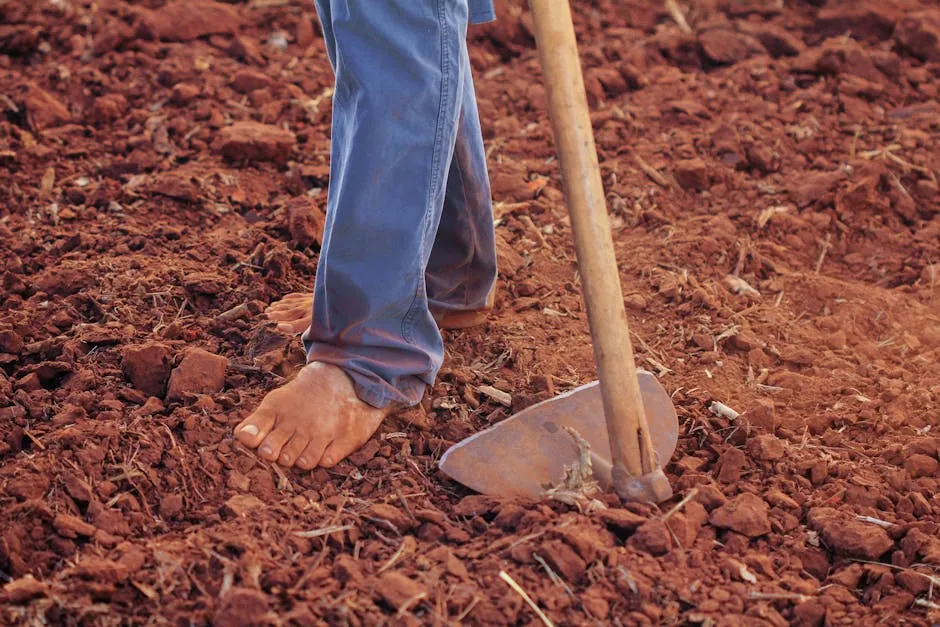
Caring for Your Tropical Fruits
Growing tropical fruits in temperate regions can be a rewarding adventure. However, knowing how to care for these vibrant plants is crucial for success. In this section, we will cover essential practices in watering, fertilization, and protection from cold weather, ensuring your tropical fruits thrive even when the temperature drops.
Watering and Fertilization
Watering practices are fundamental to the health of your tropical fruits. Deep watering is the way to go! This method encourages roots to grow deep into the soil, which helps the plants withstand periods of drought. Aim to water your plants thoroughly, soaking the soil down to about 12-18 inches. This way, the roots stay hydrated even as the top layer dries out.
Moisture management is equally important. Tropical fruits love humidity, but they can’t stand soggy roots. To maintain the right balance, check the soil regularly. If the top inch feels dry, it’s time for a drink. Consider using drip irrigation or soaker hoses to ensure that water reaches the roots directly. A soaker hose can really simplify this process!
When it comes to fertilization, organic options are your best friends. Look for fertilizers rich in nitrogen, phosphorus, and potassium. Feed your tropical fruits during the growing season, which typically runs from spring to early fall. A balanced organic fertilizer applied every 6-8 weeks will give your plants the nutrients they crave without harmful chemicals.
Compost is another excellent choice. It enriches the soil while improving moisture retention. Just mix a layer of compost into the soil before planting or add it around the base of your established plants. This not only feeds your tropical fruits but also encourages beneficial microorganisms in the soil. And don’t forget to add some organic compost for a nutrient boost!
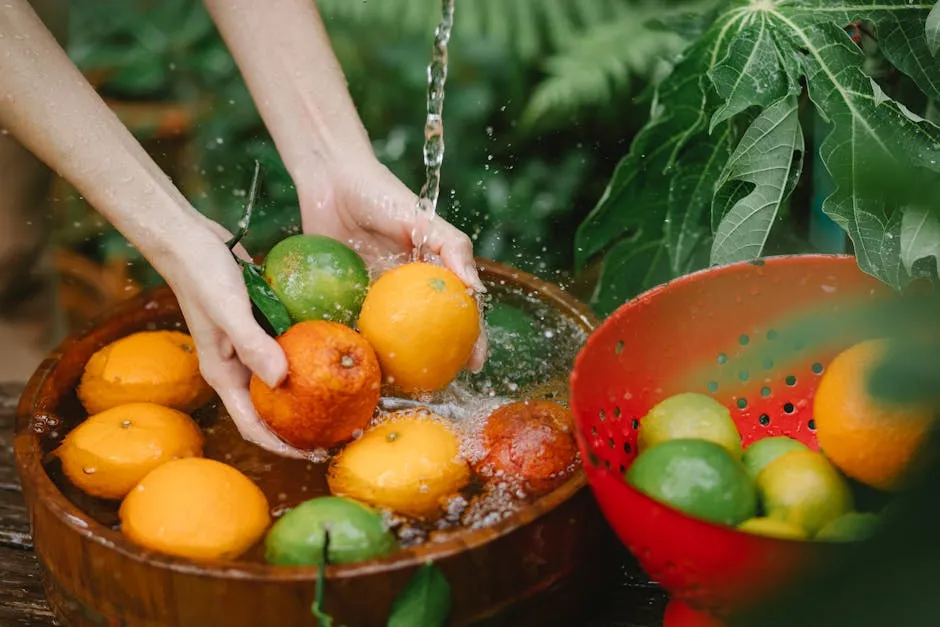
Protecting from Cold Weather
Cold weather can be a formidable foe for your tropical fruits. But fear not! With a few strategic moves, you can keep your plants cozy during winter.
Start by using frost blankets. These covers trap heat and create a warm microclimate around your plants. When temperatures drop, simply drape the blanket over your fruit trees or bushes. Remember to remove the cover during the day to let sunlight in and avoid overheating. A frost blanket can be a great investment!
Mulching is another effective strategy. A thick layer of organic mulch helps insulate the soil and protects the roots from freezing temperatures. Spread a 3-4 inch layer of mulch around the base of your plants, ensuring it doesn’t touch the stems. This will keep the soil warm and moist, giving your fruits a fighting chance against the cold.
Row covers can also be beneficial. These lightweight covers allow sunlight and moisture to penetrate while providing a shield against frost and chilling winds. Be sure to secure them well so they don’t blow away on windy nights.
Timing is essential for these protective measures. Apply mulch before the ground freezes, and monitor weather forecasts closely. If a frost is expected, cover your plants in the evening when temperatures start to drop. With these strategies in place, your tropical fruits will have the best chance to survive and thrive through winter!

Managing Pests and Diseases
Caring for your tropical fruits also means keeping an eye out for pests and diseases. Understanding common threats is crucial to maintaining a healthy garden.
Common Pests and Diseases
Tropical fruits face several common pests that can wreak havoc. Aphids, spider mites, and fruit flies are often the culprits. Keep a lookout for signs of trouble. Yellowing leaves, sticky residue, or visible insects can indicate an infestation.
Diseases such as powdery mildew and root rot can also pose problems. Powdery mildew appears as a white, powdery coating on leaves. It thrives in humid conditions, so ensure good airflow around your plants. Root rot, on the other hand, is typically caused by overwatering. Ensure your soil drains well and avoid watering too frequently.
Regularly inspecting your plants can prevent these issues from escalating. If you notice any warning signs, act quickly to address them. Early intervention can save your tropical fruits from severe damage.

Prevention and Control Methods
When growing tropical fruits in temperate regions, pests and diseases can be a gardener’s worst nightmare. To combat these pesky intruders, organic pest control methods are your best bet. One effective approach is to attract beneficial insects like ladybugs and lacewings. These little heroes feast on aphids, spider mites, and other harmful critters. You can entice them into your garden by planting flowers such as marigolds and dill.
Another handy trick is to use neem oil or insecticidal soap. These natural remedies can help keep pests at bay without harming your plants or the environment. Just remember to apply them early in the morning or late in the evening to avoid sunburn on your tropical treasures. For your convenience, don’t forget to keep a bottle of neem oil spray handy!
Now, there are times when organic methods just don’t cut it. If pest populations get out of hand and your fruits are at risk, it may be time to consider chemical controls. Choose products that are specifically labeled for use on edible plants and follow safety guidelines closely. Always wear gloves and a mask when applying these chemicals. And please, read the label—because no one wants to be the gardener that turned their mango tree into a chemistry experiment!

Harvesting and Enjoying Your Tropical Fruits
Signs of Ripeness
Harvesting tropical fruits at the right time is essential for the best flavor. Each fruit has its own unique signs of ripeness. For example, mangoes should feel slightly soft when gently squeezed. If they’re still firm, give them a few more days on the tree. Pineapples, on the other hand, are ready when their skin turns a golden-yellow and they emit a sweet aroma.
Bananas are a bit trickier. They should be harvested when they are plump and the skin is still green, as they will ripen off the plant. Keep an eye on the color; once they turn yellow, it’s time to enjoy!
Knowing these indicators will ensure your tropical harvest is bursting with flavor and sweetness!
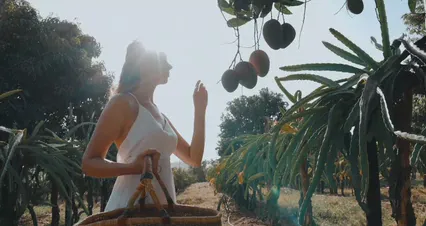
Creative Ways to Enjoy Your Harvest
Once you’ve gathered your tropical bounty, the fun really begins! There are countless ways to enjoy your homegrown delights.
Start your day with a refreshing smoothie. Blend ripe bananas, mangoes, and a splash of coconut milk for a tropical twist that will transport you straight to the beach. To make this easy, consider investing in a smoothie maker!
Feeling fancy? Create a vibrant tropical fruit salad! Combine diced pineapple, mango, and papaya, and drizzle with lime juice and a sprinkle of chili powder for a zesty kick.
And don’t forget dessert! How about a delicious coconut-mango ice cream? Simply blend ripe mangoes with coconut cream, freeze, and enjoy this creamy treat on a warm day. You can even use a tropical fruit juicer for an extra smooth blend!
From smoothies to salads, the possibilities are endless. Your tropical fruits are not just a treat; they are an invitation to a culinary adventure!
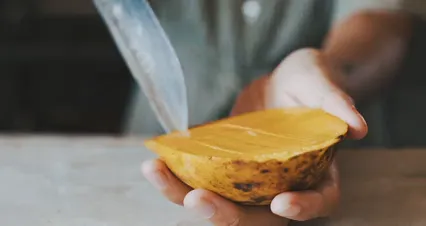
Conclusion
Growing tropical fruits in temperate regions is not just a dream but an achievable goal for passionate gardeners. With the right knowledge, preparation, and care, you can cultivate a vibrant and productive garden that bursts with exotic flavors. Embrace the challenges, celebrate the successes, and enjoy the delightful fruits of your labor. Your tropical adventure awaits—let’s get planting! And if you’re looking for some fun outdoor activities, consider a hammock for some relaxation time in your garden!
Please let us know what you think about our content by leaving a comment down below!
Thank you for reading till here 🙂
All images from Pexels



